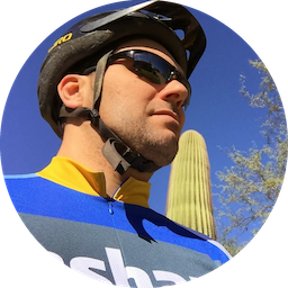Welcome to the Onshape forum! Ask questions and join in the discussions about everything Onshape.
First time visiting? Here are some places to start:- Looking for a certain topic? Check out the categories filter or use Search (upper right).
- Need support? Ask a question to our Community Support category.
- Please submit support tickets for bugs but you can request improvements in the Product Feedback category.
- Be respectful, on topic and if you see a problem, Flag it.
If you would like to contact our Community Manager personally, feel free to send a private message or an email.
Cutting a pocket in a curve
 dylan_lynch
Member Posts: 3 EDU
dylan_lynch
Member Posts: 3 EDU
I can't figure out how to get a sketch tangent to a curve.
For a simple case: If I want to cut a hole in the side of a cylinder, how would I go about that using a sketch? Is it possible to do this without a Boolean or is that the way to go? Auxillary question: If that is the way to go how can I move the second part in the Part Studio (or copy the arrangement from an assembly back to the Part studio)?
For a simple case: If I want to cut a hole in the side of a cylinder, how would I go about that using a sketch? Is it possible to do this without a Boolean or is that the way to go? Auxillary question: If that is the way to go how can I move the second part in the Part Studio (or copy the arrangement from an assembly back to the Part studio)?
0
Best Answer
-
 lougallo
Member, Moderator, Onshape Employees, Developers, csevp, pcbaevp Posts: 2,016
lougallo
Member, Moderator, Onshape Employees, Developers, csevp, pcbaevp Posts: 2,016  @dylan_lynch This would be easier when we have a split face tool. Steps to do it now:"
@dylan_lynch This would be easier when we have a split face tool. Steps to do it now:"- For now we create a plane outside the part
- Extrude up to surface of the part with the profile (as NEW)
- Use Thicken-> Remove to cut the face back the desired depth, (select touching face of toolbody

Lou Gallo / PD/UX - Support - Community / Onshape, Inc.6
Answers
1 Extrude your tool against the cylinder face
2 Move tool
3 Boolean Subtract
Alternatively you could also create a surface on the cylinder face thicken then Boolean. this would get the pocket faces normal to the cylinder face.
Take screen shot and upload, a picture will tell us more.
Twitter: @onshapetricks & @babart1977
For the pocket on the side there I had to create the plane through the center of the cylinder and then make the second plane using an offset. Then I could draw a sketch and make a pocket.
I guess my question now is: How do I create that plane directly (if at all). Is there a way to draw a plane tangent to a curve? Edit: to clarify: Offset works well when you have a cylinder but if I have a more complicated curved surface it seems to become a lot more difficult.
@LouGallo yes split face would be great here so you don't end up with a tool.
Twitter: @onshapetricks & @babart1977
Twitter: @onshapetricks & @babart1977
However, now that we can split faces, it is possible to avoid the toolbody by using the sketh to directly split the target face. However, this poses a new problem that I don't see how to deal with: If the target body has a continuous face (like a cylinder has), then the split face command will split the face also on the far side of the cylinder. You can of course then use the thicken cut on just one of the split faces, but if I then want to use a circular face pattern to copy this hole/pocket, it will fail if one of the copies overlaps the far side split face.
This document illustrates the issue:
https://cad.onshape.com/documents/06e0c5e59725061543294565/w/96b80c914ff3d0cca1d48ea2
In the part studio called "toolbody", I used the method outlined by @lougallo, and then patterned the hole. In the part studio "split face" I tried to do the same using the split face command, but the pattern fails since one of the copies exactly overlaps the splitted face on the far side. If the pattern count is 3 or 5 it works, since no copy will then overlap exactly.
I'm not sure if this is the correct behaviour? This is of course easy enough to work around (either just use the old method, or pre-split the target surface so that the final split isn't replicated on the far side), but shouldn't this have worked without doing such tricks?
In the meantime, a really simple solution is to delete that extra face before patterning. Since the cylinder is analytic, it will correctly close the cylinder back into a single face and allow the pattern to succeed.
Ah well, no harm done, and learned something along the way. Thanks. :-)